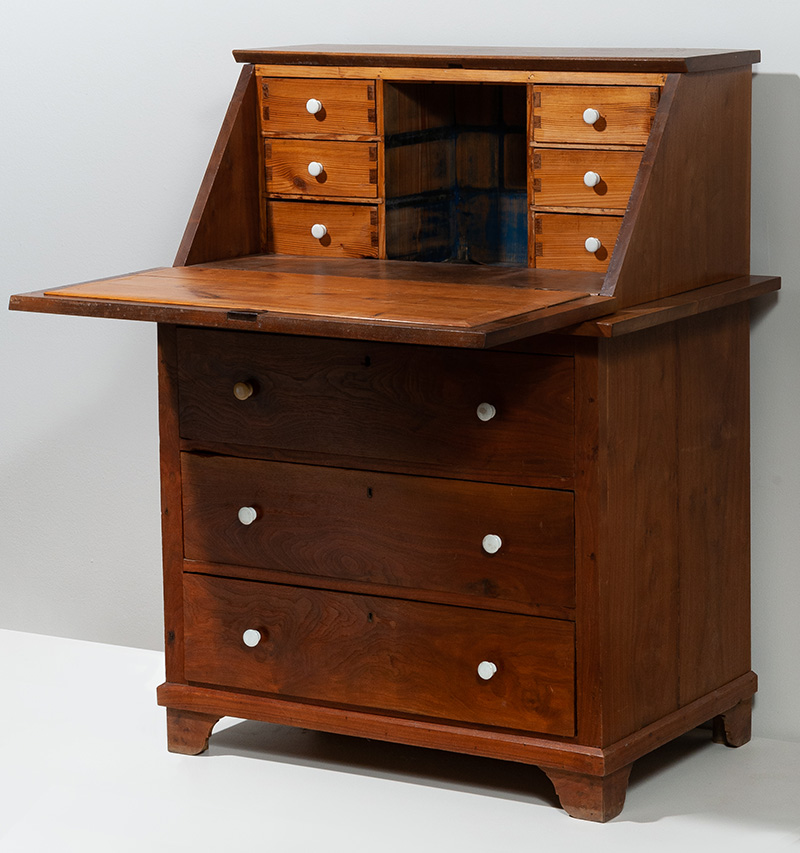Slant Top Bureau Desk

| Maker | Unknown |
| Date of Creation | 1870–80 |
| Location | Burton, Texas |
| Materials | Pine, walnut |
| Institution | San Antonio Museum of Art |
| Credit Line | San Antonio Museum of Art, gift of Faith and Charles Bybee |
| Accession Number | 92.60.3 |
| Photo Credit | Photography by Peggy Tenison |
Around 1830, there was a wave of immigration to Texas from Europe, particularly Germany and eastern Europe, due to perceived opportunities in the territory. Experienced cabinetmakers settled there. Between 1839 and 1880, there were nearly 1,000 cabinetmakers in Texas. A significant number of them were of Germanic descent, and furniture production was most heavily concentrated in the Germanic settlements in the Hill Country and between the Brazos and Colorado Rivers in Central Texas. Like other German craftsmen who came to America, these artisans initially attempted to replicate the traditions and styles of their homeland, producing furniture in the Biedermeier style popular at the time, featuring simple, clean lines, restrained ornament, and light-colored woods. Later furniture reflects the melding of traditional Germanic forms with revival style decoration. Texas furniture is typically made of woods native to the state such as pine and walnut, and embellished with less expensive decorations, such as simple porcelain pulls for drawers.
The ogee-scalloped frames on the two panels of this desk’s slant lid relate to similar ornamentation on numerous pieces of Texas furniture made by Germanic craftsmen, suggesting a regional stylistic characteristic. Perhaps derived from earlier traditional ogee-scalloped framing seen in 18th-century furniture made in the eastern states, particularly in Pennsylvania German areas, this framed panel construction appears on other Texas desks and cupboard doors in various configurations.

